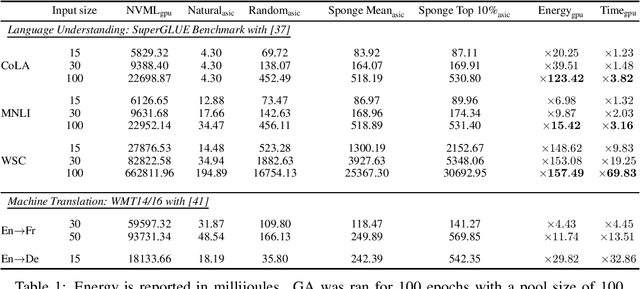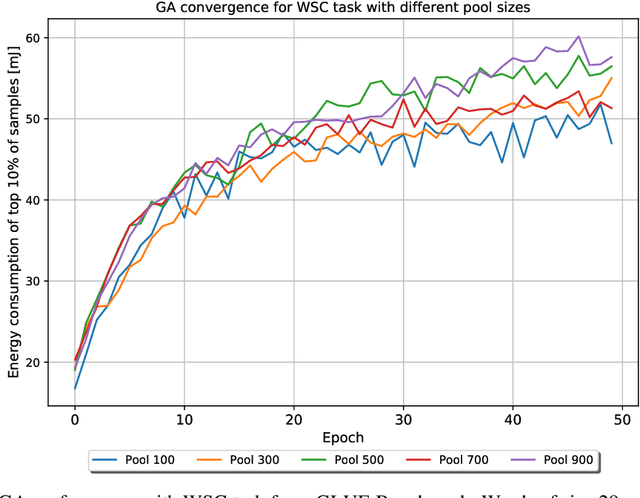Sponge Examples: Energy-Latency Attacks on Neural Networks
Paper and Code
Jun 05, 2020



The high energy costs of neural network training and inference led to the use of acceleration hardware such as GPUs and TPUs. While this enabled us to train large-scale neural networks in datacenters and deploy them on edge devices, the focus so far is on average-case performance. In this work, we introduce a novel threat vector against neural networks whose energy consumption or decision latency are critical. We show how adversaries can exploit carefully crafted $\boldsymbol{sponge}~\boldsymbol{examples}$, which are inputs designed to maximise energy consumption and latency. We mount two variants of this attack on established vision and language models, increasing energy consumption by a factor of 10 to 200. Our attacks can also be used to delay decisions where a network has critical real-time performance, such as in perception for autonomous vehicles. We demonstrate the portability of our malicious inputs across CPUs and a variety of hardware accelerator chips including GPUs, and an ASIC simulator. We conclude by proposing a defense strategy which mitigates our attack by shifting the analysis of energy consumption in hardware from an average-case to a worst-case perspective.
 Add to Chrome
Add to Chrome Add to Firefox
Add to Firefox Add to Edge
Add to Edge